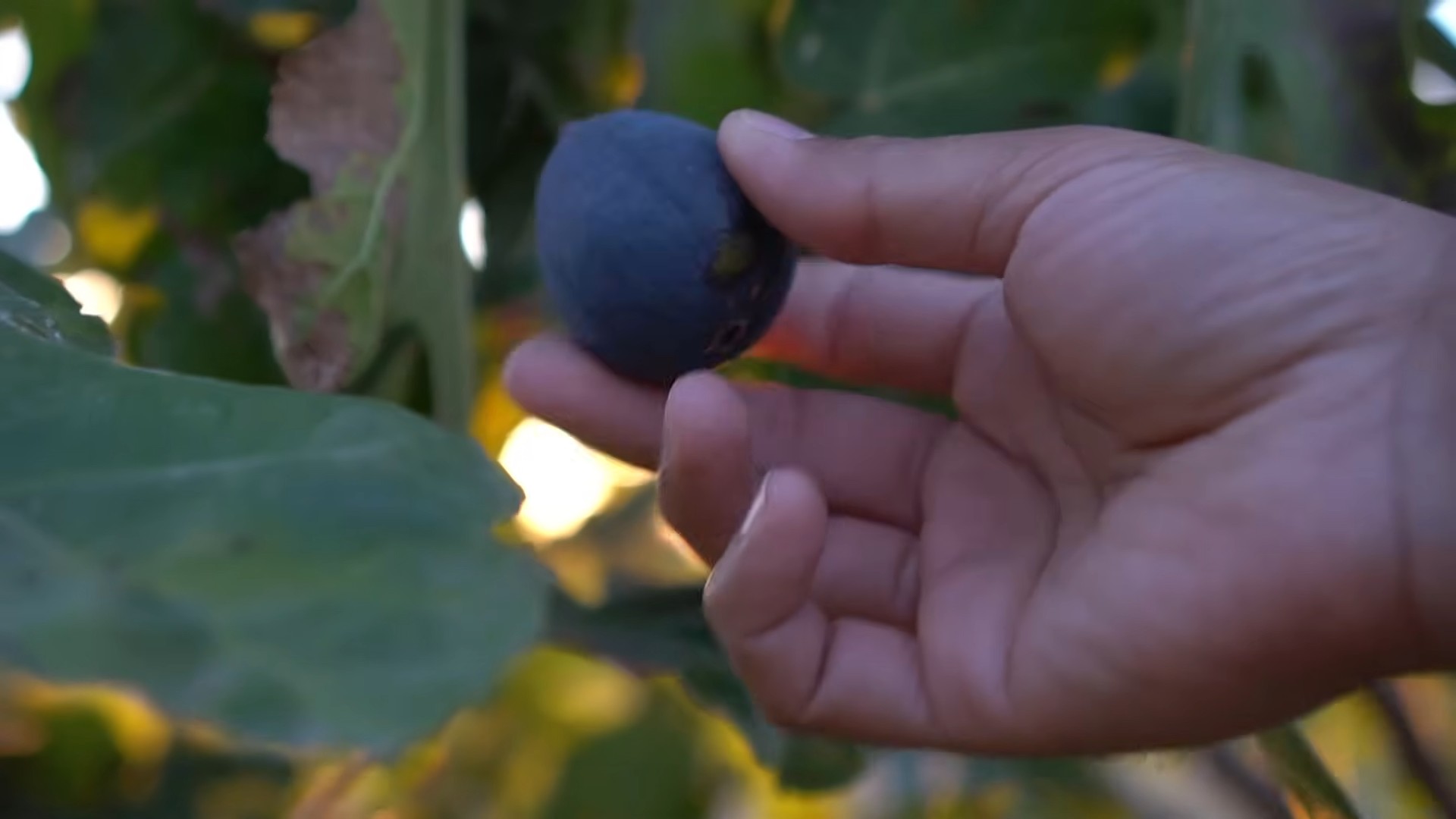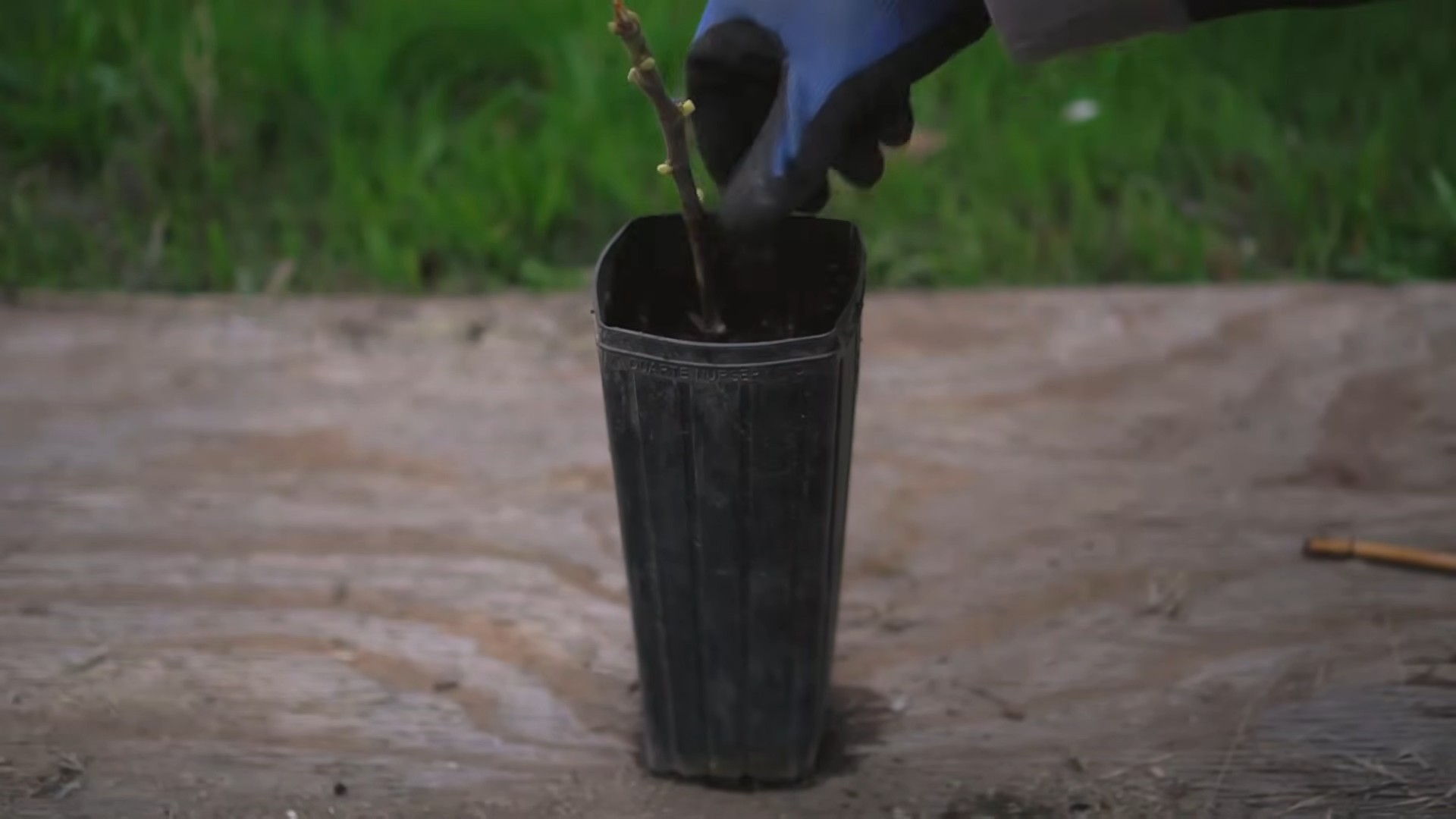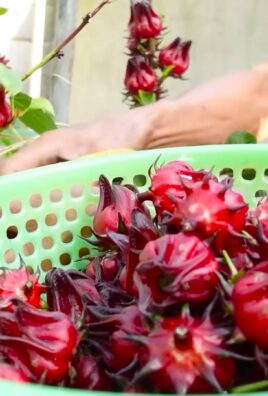Planting Figs in your Backyard Garden might seem like a dream reserved for Mediterranean villas, but trust me, it’s totally achievable right in your own backyard! Imagine plucking sun-ripened, juicy figs straight from your own tree – the taste is simply divine and far surpasses anything you’ll find in a grocery store. For centuries, figs have been cherished across cultures, symbolizing prosperity and peace, and featuring prominently in ancient cuisines from the Middle East to the Roman Empire.
But why should you bother with planting figs? Well, beyond the delicious fruit, fig trees are surprisingly low-maintenance once established, offering beautiful foliage and a touch of exotic charm to your landscape. Plus, with a few clever DIY tricks and hacks, you can overcome common challenges like climate limitations and pest control, ensuring a bountiful harvest year after year. I’m here to share my tried-and-true methods for successfully planting figs in your backyard garden, transforming even the smallest space into a fig-lover’s paradise. Get ready to roll up your sleeves and discover the secrets to growing these delectable fruits right at home!

Planting Figs: Your Guide to a Bountiful Backyard Harvest
Hey there, fellow gardening enthusiasts! I’m so excited to share my experience and knowledge on planting fig trees in your backyard. Figs are not only delicious but also relatively easy to grow, making them a fantastic addition to any garden. This guide will walk you through everything you need to know, from choosing the right variety to ensuring a healthy and productive tree. Let’s get started!
Choosing the Right Fig Variety
Before you even think about digging a hole, it’s crucial to select a fig variety that thrives in your climate. Fig trees are generally hardy, but some are better suited to colder regions than others. Here’s a breakdown of some popular varieties:
* Brown Turkey: This is a classic choice, known for its cold hardiness and reliable fruit production. It produces medium-sized, brownish-purple figs with a sweet flavor. I’ve had great success with Brown Turkey in my own garden.
* Celeste: Another excellent option for cooler climates, Celeste figs are small, sweet, and have a distinctive teardrop shape. They’re also known for their early ripening.
* Chicago Hardy: As the name suggests, this variety is incredibly cold-hardy. It can withstand temperatures well below freezing, making it ideal for gardeners in colder regions. The figs are medium-sized and have a rich, sweet flavor.
* Black Mission: If you live in a warmer climate, Black Mission is a fantastic choice. These figs are large, dark purple, and have a rich, intense flavor.
* Kadota: Known for its thick skin and mild flavor, Kadota figs are often used in canning and preserving. They’re a good option for warmer climates.
Things to consider when choosing a variety:
* Climate: This is the most important factor. Research which varieties are known to thrive in your area.
* Space: Fig trees can grow quite large, so consider the available space in your backyard. Some varieties are more compact than others.
* Taste Preference: Do you prefer sweet figs, mild figs, or something in between?
* Fruit Use: Are you planning to eat the figs fresh, dry them, or use them in preserves?
Preparing the Planting Site
Once you’ve chosen your fig variety, it’s time to prepare the planting site. Figs need plenty of sunlight and well-drained soil to thrive.
* Sunlight: Choose a location that receives at least 6-8 hours of direct sunlight per day.
* Soil: Fig trees prefer well-drained soil with a slightly acidic to neutral pH (6.0-7.0). If your soil is heavy clay, amend it with plenty of organic matter, such as compost or well-rotted manure.
* Drainage: Poor drainage can lead to root rot, so make sure the planting site drains well. You can improve drainage by adding gravel or sand to the soil.
* Spacing: Depending on the variety, fig trees can grow quite large. Space trees at least 15-20 feet apart to allow for adequate growth. For smaller, more compact varieties, you can reduce the spacing to 10-12 feet.
Planting Your Fig Tree: Step-by-Step
Now for the fun part – planting your fig tree! Here’s a step-by-step guide to ensure a successful planting:
1. Dig the Hole: Dig a hole that is twice as wide as the root ball and just as deep. This will give the roots plenty of room to spread out.
2. Amend the Soil: Mix the soil you removed from the hole with compost or well-rotted manure. This will provide the tree with essential nutrients and improve drainage. I usually use a 50/50 mix.
3. Remove the Tree from the Container: Gently remove the fig tree from its container. If the roots are circling the pot, gently loosen them with your fingers. This will encourage them to grow outward into the surrounding soil.
4. Place the Tree in the Hole: Position the tree in the center of the hole, making sure the top of the root ball is level with the surrounding soil.
5. Backfill the Hole: Backfill the hole with the amended soil, gently tamping it down as you go. Be careful not to compact the soil too much, as this can restrict root growth.
6. Water Thoroughly: Water the newly planted tree thoroughly to settle the soil and provide moisture to the roots.
7. Mulch: Apply a layer of mulch around the base of the tree to help retain moisture, suppress weeds, and regulate soil temperature. I like to use wood chips or straw. Keep the mulch a few inches away from the trunk to prevent rot.
8. Stake (Optional): If the tree is young and spindly, you may want to stake it to provide support. Use soft ties to attach the tree to the stake, being careful not to damage the bark.
Caring for Your Fig Tree
Once your fig tree is planted, it’s important to provide proper care to ensure its health and productivity.
* Watering: Water your fig tree regularly, especially during dry periods. Young trees need more frequent watering than established trees. Aim to keep the soil consistently moist but not waterlogged. I usually water deeply once or twice a week, depending on the weather.
* Fertilizing: Fig trees benefit from regular fertilization. In the spring, apply a balanced fertilizer, such as 10-10-10, according to the manufacturer’s instructions. You can also amend the soil with compost or well-rotted manure.
* Pruning: Pruning is essential for maintaining the shape and productivity of your fig tree. Prune in late winter or early spring, before new growth begins. Remove any dead, damaged, or crossing branches. You can also prune to shape the tree and encourage fruit production.
* Pest and Disease Control: Fig trees are generally resistant to pests and diseases, but they can be susceptible to certain problems. Watch out for common pests like aphids, spider mites, and scale. Treat infestations with insecticidal soap or neem oil. Root rot can be a problem in poorly drained soil. Prevent root rot by ensuring good drainage and avoiding overwatering.
* Protecting from Cold: If you live in a colder climate, you may need to protect your fig tree from frost and freezing temperatures. Wrap the trunk with burlap or blankets, or move the tree to a sheltered location. For container-grown trees, you can bring them indoors during the winter.
Harvesting Your Figs
The moment you’ve been waiting for – harvesting your figs! Figs are typically ready to harvest in late summer or early fall.
* Ripeness: Figs are ripe when they are soft to the touch and slightly droop on the stem. The skin color will also change, depending on the variety.
* Harvesting: Gently twist the fig from the stem. If it’s ripe, it should come off easily.
* Storage: Fresh figs are best eaten within a few days of harvesting. You can store them in the refrigerator for a short time. Figs can also be dried, canned, or made into preserves.
Troubleshooting Common Fig Tree Problems
Even with the best care, you might encounter some problems with your fig tree. Here are some common issues and how to address them:
* Fruit Drop: Premature fruit drop can be caused by a variety of factors, including stress, lack of water, or poor pollination. Ensure your tree is getting enough water and fertilizer, and protect it from extreme temperatures.
* Leaf Yellowing: Yellowing leaves can indicate a nutrient deficiency, overwatering, or pest infestation. Check the soil pH and nutrient levels, and adjust your watering schedule accordingly.
* Lack of Fruit: If your fig tree isn’t producing fruit, it could be due to a lack of sunlight, improper pruning, or a young tree that hasn’t reached maturity yet. Ensure your tree is getting enough sunlight, prune it properly, and be patient. Some varieties take a few years to start producing fruit.
* Root Rot: As mentioned earlier, root rot is a common problem in poorly drained soil. Improve drainage by amending the soil with organic matter and avoiding overwatering.
Growing Figs in Containers
If you don’t have a lot of space in your backyard, you can still grow fig trees in containers. Here are some tips for growing figs in containers:
* Choose the Right Container: Select a large container with drainage holes. A 15-20 gallon container is a good size for a mature fig tree.
* Use a Well-Draining Potting Mix: Use a high-quality potting mix that drains well. Avoid using garden soil, as it can become compacted in containers.
* Water Regularly: Container-grown fig trees need more frequent watering than those planted in the ground. Water when the top inch of soil feels dry.
* Fertilize Regularly: Fertilize your container-

Conclusion
So, there you have it! Mastering the art of planting figs in your backyard garden doesn’t have to be an intimidating endeavor. With a little planning, the right techniques, and a dash of patience, you can cultivate your own thriving fig tree and enjoy the sweet rewards for years to come. This DIY approach, focusing on careful site selection, proper planting depth, and consistent care, is truly a must-try for any home gardener looking to add a touch of Mediterranean charm and delicious fruit to their landscape.
Why is this DIY method so compelling? Because it empowers you to take control of the entire process, from selecting the perfect fig variety for your climate to nurturing its growth every step of the way. You’re not just buying a fig tree; you’re building a relationship with it, understanding its needs, and tailoring its environment to maximize its potential. This hands-on approach leads to healthier, more productive trees and a deeper sense of satisfaction.
But don’t stop there! Experiment with different fig varieties to discover your personal favorites. Consider planting companion herbs like rosemary or lavender nearby to deter pests and enhance the overall garden ecosystem. You could even try espaliering your fig tree against a sunny wall to create a stunning focal point and maximize sunlight exposure in cooler climates. For those in colder regions, planting in a large container allows you to move the tree indoors during the winter months, ensuring its survival and continued fruit production. Think about adding a layer of mulch around the base of your fig tree to help retain moisture and suppress weeds. You can use organic materials like wood chips, straw, or shredded leaves.
Remember, successful fig cultivation is an ongoing journey of learning and adaptation. Pay close attention to your tree’s needs, adjust your care routine as necessary, and don’t be afraid to experiment. The rewards of fresh, homegrown figs are well worth the effort.
We wholeheartedly encourage you to embark on this rewarding gardening adventure. Try this DIY method for planting figs in your backyard garden and experience the joy of harvesting your own delicious fruit. And most importantly, share your experiences with us! We’d love to hear about your successes, challenges, and any unique tips or tricks you discover along the way. Post photos of your fig trees, share your favorite fig recipes, and connect with fellow gardeners in the comments section below. Let’s build a community of fig enthusiasts and inspire others to embrace the magic of homegrown figs!
Frequently Asked Questions (FAQ)
What is the best time of year to plant a fig tree?
The ideal time to plant a fig tree is during the dormant season, which is typically in late fall or early spring. This allows the tree to establish its roots before the active growing season begins. Avoid planting during the heat of summer or when the ground is frozen. If you live in a region with mild winters, fall planting is often preferred as it gives the tree more time to acclimate before the next growing season. In colder climates, spring planting is generally recommended to avoid potential frost damage to newly planted trees.
How much sunlight does a fig tree need?
Fig trees thrive in full sun, requiring at least 6-8 hours of direct sunlight per day. Adequate sunlight is crucial for fruit production and overall tree health. If your fig tree doesn’t receive enough sunlight, it may produce fewer fruits, and the fruits may be smaller and less flavorful. Choose a planting location that receives ample sunlight throughout the day. If you’re growing your fig tree in a container, you can move it to a sunnier location as needed.
What type of soil is best for fig trees?
Fig trees prefer well-draining soil that is rich in organic matter. The soil should be slightly acidic to neutral, with a pH between 6.0 and 7.0. Avoid planting fig trees in heavy clay soil, as this can lead to root rot. If your soil is heavy or poorly draining, amend it with compost, peat moss, or other organic materials to improve drainage and fertility. A well-draining soil mix will prevent water from pooling around the roots, which can cause fungal diseases and other problems.
How often should I water my fig tree?
Water your fig tree regularly, especially during the first year after planting. Water deeply and thoroughly, allowing the soil to dry out slightly between waterings. Avoid overwatering, as this can lead to root rot. During hot, dry weather, you may need to water your fig tree more frequently. Established fig trees are relatively drought-tolerant, but they will still benefit from regular watering, especially during fruit development. Check the soil moisture regularly and adjust your watering schedule accordingly.
Do fig trees need fertilizer?
Fig trees benefit from regular fertilization, especially during the growing season. Use a balanced fertilizer with a ratio of 10-10-10 or 8-8-8. Apply fertilizer in early spring, just before new growth begins, and again in mid-summer. Avoid fertilizing in late fall or winter, as this can encourage new growth that may be damaged by frost. Follow the instructions on the fertilizer package carefully to avoid over-fertilizing, which can damage the tree. Organic fertilizers, such as compost or manure, can also be used to provide nutrients to your fig tree.
How do I prune a fig tree?
Pruning is essential for maintaining the shape and productivity of your fig tree. Prune your fig tree during the dormant season, typically in late winter or early spring. Remove any dead, damaged, or diseased branches. Thin out the canopy to improve air circulation and sunlight penetration. Prune back branches that are crossing or rubbing against each other. You can also prune to control the size and shape of your tree. Different fig varieties may require different pruning techniques, so research the specific needs of your variety.
How do I protect my fig tree from pests and diseases?
Fig trees are generally resistant to pests and diseases, but they can be susceptible to certain problems. Common pests include fig mites, scale insects, and nematodes. Diseases include fig rust, leaf spot, and root rot. Inspect your fig tree regularly for signs of pests or diseases. Treat any problems promptly with appropriate insecticides or fungicides. Proper watering, fertilization, and pruning can help to prevent pests and diseases. Consider using organic pest control methods whenever possible.
How long does it take for a fig tree to produce fruit?
Fig trees typically begin to produce fruit within 1-3 years after planting. The exact time frame depends on the variety of fig tree, the growing conditions, and the overall health of the tree. Some fig varieties produce two crops of fruit per year, while others produce only one. The first crop, known as the “breba” crop, develops on the previous year’s growth. The second crop, known as the “main” crop, develops on the current year’s growth. Be patient and provide your fig tree with the care it needs, and you will be rewarded with delicious fruit in due time.
Can I grow a fig tree in a container?
Yes, fig trees can be successfully grown in containers, especially in regions with cold winters. Choose a large container with drainage holes. Use a well-draining potting mix. Water regularly and fertilize as needed. Move the container to a sheltered location during the winter months to protect the tree from frost. Container-grown fig trees may require more frequent watering and fertilization than those grown in the ground. Prune regularly to control the size and shape of the tree. Container growing is an excellent option for those with limited space or those who want to move their fig tree indoors during the winter.




Leave a Comment